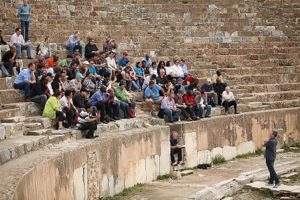Students planting churches among students on campus? Students graduating with church planting experience who then go to other campus, into professional communities and into new cities and plant churches like they learned while in college? This is happening in one part of the Philippines. College Instructor and Electrical Engineer Pee Jay N. Gealone is leading this initiative.
Pee Jay says,
Our vision is to see multiplying churches across Bicol [area of the Philippines] and eventually across the country that will really bless and transform this nation. We believe that being a Christian is not only about personal change but rather a change that once happened collectively can really transform this country. We want to see Christ-centered multiplying leaders in all sectors of society that are moving into church planting.
Eighteen churches are under Pee Jay’s care with about 600 involved members. So far, students have graduated and are opening campuses for student churches, opening house churches for professionals and opening churches in communities where God sends them.

